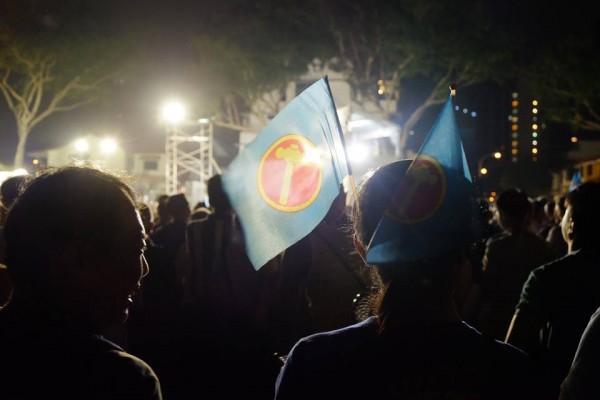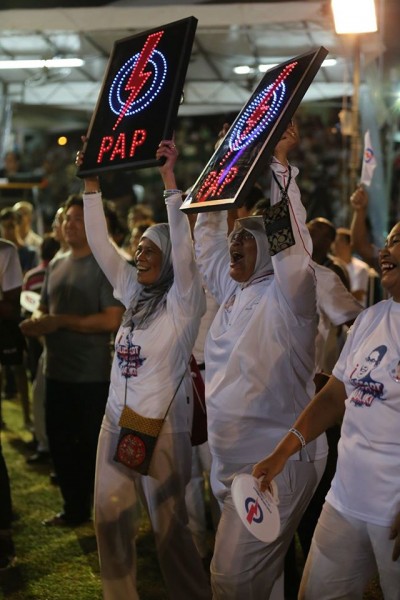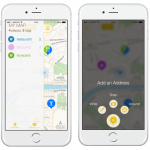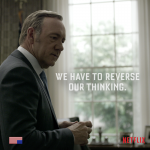
Before you vote, here’s a checklist. If you choose the People’s Action Party (PAP), you are voting for multi-racial politics, but if you vote for the Opposition, you are voting for racial politics.
That was the cover of The New Paper on January 2, 1997, as Singapore went to the polls with a certain Cheng San GRC being hotly contested (see the cover here).
With today’s social media and blogs, you’d think that Opposition candidates would get a fairer shot in the media in GE2015 this week.
That’s true, but social media or technology won’t be the main reason for any vote swing away from the ruling People’s Action Party (PAP) this time, as many believe.
As the rallies come to an end tomorrow evening, what will be topmost in voters’ minds are probably the same bread and butter issues that have mattered of late.
Healthcare, transport, the economy, an ageing population, the cost of living and immigration are just some of the problems facing Singaporeans, as the country marks 50 years of independence.
While social media have helped crystallise complex issues like town council management and let users dissect the minute details of each candidate’s speech, it’s what’s in the real world instead of the virtual that still counts the most.
How else would you explain the large crowds at Workers’ Party (WP) rallies each evening this past week, when for the first time, we have live streaming of all the speeches online?
In one of the most well-connected countries in the world, people still want to brave the haze, head down to the stadiums and open fields to hear the candidates out.
At Hougang last week, I even spotted some supporters watching a live video of the same rally on their phones because the speaker system at the venue wasn’t working well. Talk about augmented reality.
Similarly, why would candidates go on daily house visits and be seen at MRT stations in an age where you can reach millions with a Tweet or Facebook update? There’s nothing like pressing your hand into a voter’s to show your sincerity.
Indeed, because of past media portrayals that were seen as negative, WP candidates like leader Low Thia Khiang are famously wary of the media. They are known for their door-to-door pitches, turning up at residents’ doorsteps to deliver their message personally.
That sales pitch is still the most important today, even as social media and technology have opened up new channels to reach out to voters. The medium is not the message.
In the United States, Barack Obama was known to have run successful campaigns using data analytics to rally supporters around the country. It’s uncertain that would work as well here in Singapore.
A small place means that it is easier to reach out to people without relying as much on technology. If it is used, it has to account for the unique characteristics here, going beyond just demographics to target one’s campaign.
Or, that Big Data information could very well be stored in the brains of the most experienced, battle-hardened party leaders in Singapore as they go to the polls each time.

Ultimately, social media and technology are often only a catalyst, or spark, in changing opinion in politics.
I recall speaking with a senior government official once about Facebook and why people seem so “angry” when they post about the government these days. It’s not social media that are fuelling resentment, but the underlying issues of the day, I argued.
Sure, Facebook and Twitter have made it easy to rant and amplify one’s frustration when the MRT breaks down, but it’s the regular breakdowns themselves that make people angry.
As a friend told me, when you are squeezed in a train every day and you just had a bad day, what’s the most instinctive way to share your frustration? With the phone in your hands.
Singaporeans live some of the most stressful lives and are apparently such an unhappy people, according to survey after survey, so it’s little wonder this is amplified through social media.
In the same way, that sentiment is playing out this election season. Unlike in 2011, when the PAP was caught out by the opinions led by alternative media channels, it now has its own activists organised to have their say online.
In 2011, Prime Minister Lee Hsien Loong got onto Facebook to meet citizens for the first time, rallying support at a difficult time in the campaign when his party was facing the loss of Aljunied GRC. Eventually, the constituency did slip away from the PAP.
This time round, the party seems prepared for media channels that have a lot more dissenting views than The New Paper in 1997.
If the PAP doesn’t improve on its results in 2011, it won’t be down to social media or technology. It just has to improve on its performance in real-world issues.






